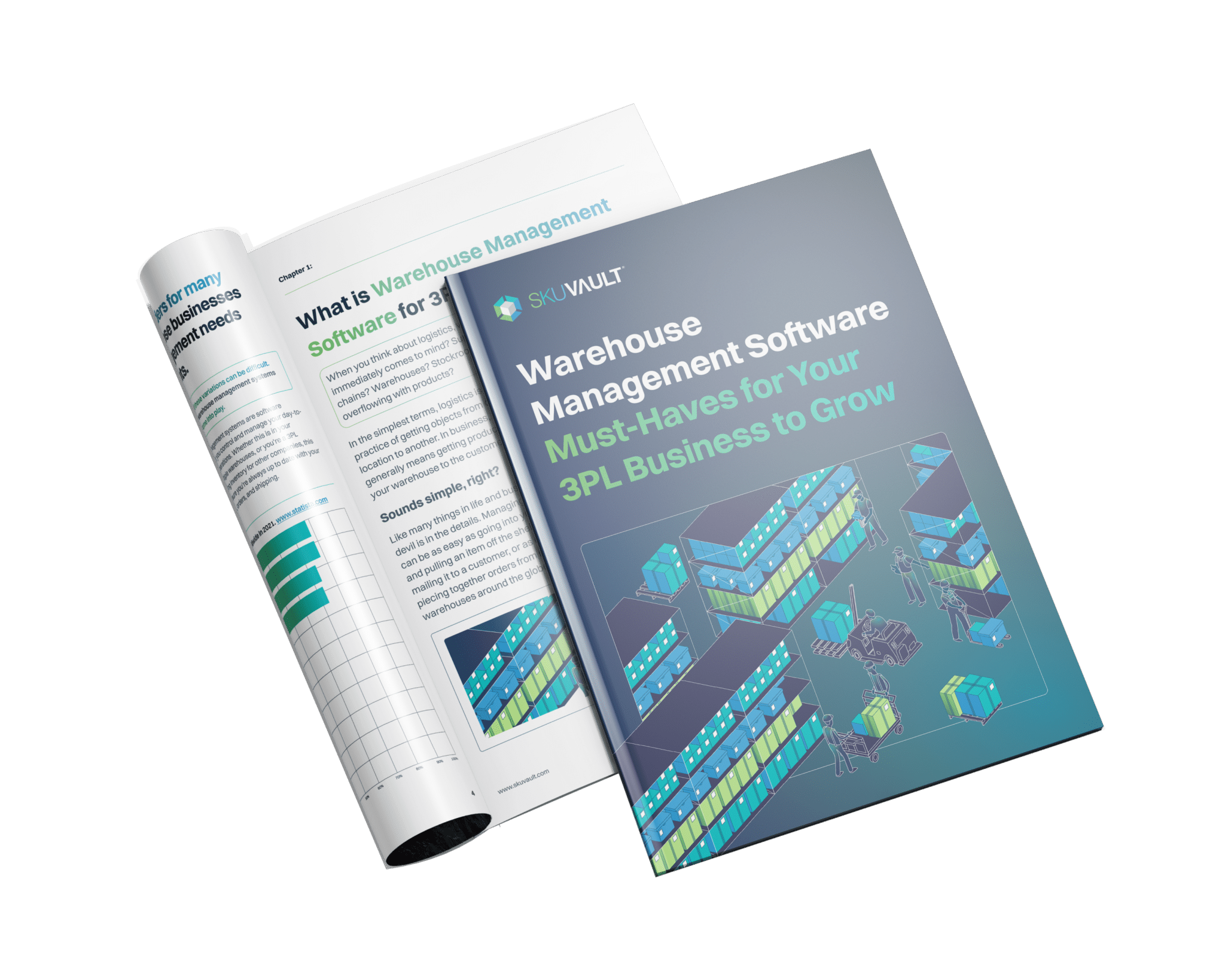
In these modern times, the first instinct of consumers and even companies looking for a product or service is to “Google it.”
This is also true for the third-party logistics (3PL) industry. If a business is looking for a fulfillment partner, search engines are usually the first place they’ll turn (just like the rest of us).
The question is, how do you stand out from thousands of other 3PL warehouses competing online for the same clients? The answer is in three simple letters: SEO.
SEO stands for search engine optimization, the art and science of ranking higher in Google and achieving more free, organic traffic from qualified searchers.
It doesn’t matter if you’ve got the slickest web page, the best marketing copy, and a solid team to back it up. If no one can find you in search, you’re likely giving away dozens of leads to your competitors.
This post will get into SEO best practices for 3PL providers that will help you stand out and win more business.
Positioning Yourself as the Best Provider
Your potential client’s purchasing journey is long and complex — a process that marketers refer to as the sales funnel. It consists of three stages: the top-of-funnel (ToFu), middle-of-funnel (MoFu), and bottom-of-funnel (BoFu).
Why is it important to distinguish between the stages of the customer journey?
Because your target audience’s search behavior changes as they progress through the conversion funnel, meaning your SEO efforts must meet the searcher where they are — even if it means writing content that doesn’t directly “sell” them.
At the top of the funnel, businesses are aware that they have a problem, but they’re not quite sure how to solve it.
Maybe they’re having fulfillment issues or can’t keep up with demand, so they may search for things like, “how to fulfill products faster” or “what to do when you run out of warehouse space.”
They’re not ready to buy, but they’re starting to feel the pinch of a pain point your 3PL can help them solve.
In the middle of the funnel, customers know they need a 3PL and have begun weighing their options. They may search things like “3PL pricing guide,” “how much should I pay for fulfillment?” or “[3PL brand] vs. [other 3PL brand].”
Bottom-of-funnel searches are all about closing the deal. They’ll often include branded queries, such as “where to buy [your brand]” or simply the name of your business.
To corner the 3PL market and stand out among your competitors, your website must have content that covers all three of these funnel stages in great detail.
In the MoFu stage, visitors consider their options, and your business is one of them. At this point, they are more specific with their search queries.
To meet their current needs, you must provide all the information that can make you stand out and help them make a decision, and your SEO efforts must reflect this.
SEO Best Practices for 3PLs
By now, you have a clear idea of why SEO is important. It is time to discuss how to implement it properly and maximize your results. Here are the current best SEO practices for 3PLs and other businesses.
Optimize for Local Searches
More and more people are using local searches to find the products and services they need. Over three-quarters of consumers in the UK, Germany, France, and the US used Google to get information on local businesses in 2021.
When individuals or business owners search for a 3PL provider, they usually add their location or the phrase “near me” to the keywords that they use.
So how do you leverage this emerging trend and connect with potential customers nearby?
One of the easiest ways to do this is by setting up your Google Business Profile.
Google remains the go-to search engine globally, with nearly 4 billion out of the 4.39 billion internet users across the globe using it. The US accounts for 246 million of its unique users.
Have you ever noticed how the first result for local searches in Google is often a map with some reviews underneath it?
SEO pros call that the “map pack.” The only way to gain access to that prime real estate is by optimizing your Google Business Profile (and earning reviews from customers).
Building up your local reputation in Google takes time, so if you haven’t set up your GBP yet, do it right after reading this post. It’s fast and free!
Focus on Targeted Keywords
Back in the day, SEO practitioners would find a relevant keyword (any search term related to their business) and paste it all over their website like an over-the-top salesperson.
This technique, aptly named “keyword stuffing,” was immediately nixed by a Google algorithm change. Now, businesses find SEO success by creating keyword-targeted content that’s richer, deeper, and more valuable than all other pages on the SERPs (search engine result pages).
Most top and middle-of-funnel content is not about selling, but adding value. This means including compelling downloads, tools, educational resources, or guides that provide real value to your ideal customer.
If you don’t have access to fancy SEO software and aren’t sure what to target, go straight to the source — Google.
Type in a seed keyword related to what you offer in the Google search box, and press the spacebar. Google’s Autocomplete will start recommending suggested queries. Where does it find these suggestions? From real searchers.
Google is basically giving you a content blueprint! While you can’t see specific metrics like keyword competition or search volume, it’s a great place to start (at absolutely no charge).
Optimize Your Title Tags
The title tags are one of the first things search engines look at when determining the relevancy of your content to a specific search query. Title tags also let the users know what information to expect if they click on and read your site pages or blog posts.
Hover your cursor over the tab of this page. See the full text that appears in the tooltip box? That’s the title of this page (and every page on the internet has, or should have one).
The key is to make your title tags as informative as possible so both users and the search engines can get a topical understanding of your content. Further, you must include the keywords you are trying to rank for.
In fact, your title tag, URL, and H1 tag should all contain your target keyword. SEO pros call these the “three kings” because of their ability to inform search engines of the nature of your content.
Optimize Your Website for Mobile Users
Smartphones have become essential tools not only for communication but for every other facet of daily life. In 2021, 4.32 billion people used their mobile devices to go online and find products, services, or information. That is over 90% of the global internet population.
What’s more, experts predict we can expect more of the same in the coming years.
As smartphones continue to proliferate and transform the digital landscape, search engines are responding by placing a higher premium on mobile-optimized pages. It means that the better your website performs on smartphones or tablets, the more likely it will rank higher.
Want to check if your site is mobile-friendly? Plug it into Google’s free Mobile-Friendly Test tool.
Optimize Images to Increase Site Speed
In May of 2020, Google introduced its Core Web Vitals initiative. Their goal: to create as smooth and seamless a user experience as possible.
Core Web Vitals metrics include site loading time, interactivity, and visual stability. Now, more than ever, it’s imperative that your site loads quickly.
One of the culprits in slow loading times are improperly sized images. It’s not uncommon for brands to download a full-resolution stock photo and upload it straight to their page with zero compression. These massive files are obliterating your site speed.
Studies have shown that you lose 4.42% of your conversion rate for every second of loading time. If your website takes more than five seconds to load, there is a good chance that your visitor will bounce to your competitor.
Thankfully, optimizing photos is a quick win to gain precious seconds in loading time. And you don’t need Photoshop or any fancy software to do it.
There are dozens of browser-based tools, such as TinyPNG, that will compress your files by up to 80%.
Spending a few hours to optimize all the photos on your site is a worthwhile endeavor, especially if it means the potential to rank higher in Google search.

Your 3PL deserves better inventory transparency
Download this guide to learn the features you actually need to build happy customers
Other Ways to Drive Organic Traffic
SEO is probably the key driver of organic traffic to your website. It makes your brand appear more authoritative to your target audience and makes it easier for them to find you online.
Having said that, SEO is not the only piece of the puzzle. There are other ways to generate interest from online users and bring more visitors to your website.
Build Unique, Engaging, and Shareable Content
The phrase “Content is King” has been bandied about in the marketing industry ever since the early days of SEO. Almost three decades later, it is more accurate than ever.
The fact that you must build unique content that engages the right customers is a given. This is understandable since your blogs, social media posts, infographics, newsletters, and other website content contain most of the information people need.
It’s the very reason why they invest the time and energy to use search engines and scour the internet.
However, there is one more thing that you need to consider: your content must be shareable. There are obvious benefits of social clout and potential virality. But bringing it back to SEO, many believe social signals are important ranking factors.
Even if they aren’t directly related to Google rankings, more eyeballs on your content means more potential for backlinks and traffic — it certainly can’t hurt!
Use Guides as Lead Magnets
A lead magnet is exactly what it sounds like. It’s something of value that you give to your visitors in exchange for their contact details. You can then nurture this relationship to increase your conversions and boost sales.
When it comes to lead magnets, none are more effective than a guide or report. A well-crafted lead magnet offers relevant information that your target audience can use to make their jobs easier, more interesting, or more efficient.
So if you want to generate more quality leads, invest in helpful guides. The more specific they are, the better.
Create Video Content for Your Site and Other Platforms
Videos are extremely powerful tools for sharing information and are now a very viable SEO strategy.
Google has begun showing video results in the SERPs, especially queries for “how to.” The bottom line is that most folks prefer video when it comes to hands-on tutorials and walkthroughs.
Businesses can use it to communicate their brand story more effectively or engage prospects in a more entertaining/informative way.
And the crazy thing? Most businesses still aren’t utilizing video, especially in the inventory management and 3PL space.
We can’t blame them. Being in front of a camera is intimidating! There are scripts to memorize, audio levels to perfect, and editing needs. Video isn’t easy — and that’s exactly why you should do it.
The barrier to entry is high — much higher than just starting a blog.
Consider creating educational videos that explain to prospective customers how you can solve their pain points. Then, host it on YouTube and embed it within your content.
There’s no better way to make your blog posts and pages stand out among the competition.
Regularly Post Engaging Content on Your Social Media Channels
Social media platforms offer limitless opportunities for potential customers to have a more meaningful relationship with different brands.
That is because social media allows two-way communication — you can use it to tell people about your business and people can use it to let you know how they feel about you.
To use social media engagement to your advantage, regularly post relevant and helpful content on one to two of your social media channels.
The best part? If you’re already utilizing a content marketing and SEO strategy, you don’t need to reinvent the wheel. You can simply repurpose the content you’ve already created for your blog into the “language” of whatever social platform you’re posting on.
Doing this will help you gain the trust of your target customers and give you a stronger search engine presence via social signals, shares, and traffic from those platforms.
Grow Your Business With SEO and Other Digital Marketing Strategies
There is only one clear path to success in the current business landscape, and it goes through SEO and other digital marketing strategies. It applies across all industries, including 3PL.
So if you want to stay ahead of the curve and the pack, start implementing these best SEO practices today.
Subscribe to our blog of skuvault today for more battle-tested strategies and tactics for growing your 3PL and perfecting your inventory management process.

